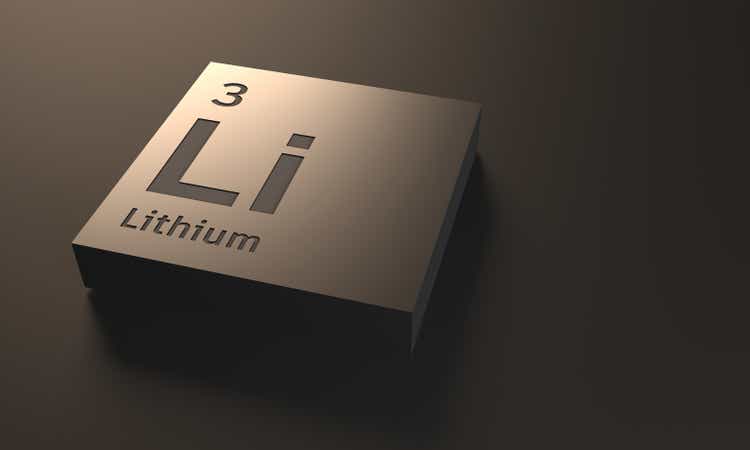cokada
Note: The following True Vine Letter was originally published on August 16, 2022.
I started hunting for another lithium producer that I think will eventually have its own integrated production from the brine or spodumene upstream to the lithium carbonate or hydroxide downstream. If I identify one that I think can get there, then I might try to buy it on the cheap during the next major selloff.
My first stop is Australian-based Mineral Resources (MIN.AX; OTCPK:MALRF; OTCPK:MALRY) which is an $8 billion market cap company with 3 core businesses: mining services, iron ore, and lithium.
The mining services business—one of the largest in resource intensive Australia—is solid (consistently profitable) with a bright growth runway. The iron ore business is not. It is losing money right now, and iron ore is making new lows on the quarterly chart.
The lithium business is comprised of a 50% stake in Mt. Marion (joint venture partner Ganfeng [OTCPK:GNENY; OTC:GNENF] owns 50%) and a 40% stake in Wodgina (joint venture partner Albemarle [ALB] owns 60%). Both mines are spodumene (hard rock) mines, which produce a 6% concentrate that is used to produce lithium hydroxide. Wodgina is regarded as one of the top hard rock lithium mines in the world.
Mineral Resources also owns 40% of the Kemerton Hydroxide Plant with Albemarle (60%) which is fed with the concentrate from Wodgina. Albemarle operates Kemerton and also markets the hydroxide. It is unclear how much technical know-how Mineral Resources is gaining through this joint venture, if any. The question is, will Mineral Resources simply remain as a company that mines and ships a lot of spodumene while increasing its ownership in hydroxide production over time or will it eventually be able to design, construct, fine tune, and operate its own hydroxide plant? My answer is that it will be the former.
I have drawn this conclusion from Mineral Resources’ capital allocation plans, which include pouring almost $2 billion into the Ashburton Hub iron ore project. Ashburton is lower grade (57.5% Fe) and will thus sell for a significant discount to the 62% Fe price. To be fair, Ashburton is projected to have significantly lower costs than their current iron production at Yilgarn and Utah Point, however, pouring this amount of capital into iron ore right now with China seemingly on shaky ground looks risky. This tells me that Mineral Resources continues to see itself as a bulk commodity miner/service company, simply able to leverage its operating footprint and service strength to form partnerships with multinational lithium producers who need that help in Western Australia. This is also another sign that being able to refine lithium into hydroxide is not easy.
The only caveat here is that Mineral Resources’ management seems hesitant to give firm guidance on the Ashburton expansion and may look to draw out the development time frame, especially if the long lead time items that they have already ordered take longer to receive. If they put the capital into Ashburton over the next 2 to 3 years, then the company will likely not produce any free cash flow, which is problematic for me, given that they are taking on more high interest debt and I do not expect 2023 to be pretty from a global economic standpoint.
If they do hit the pause button on Ashburton in a meaningful way, then the stock looks somewhat attractive as a trade for its immediate exposure to high spodumene concentrate and lithium hydroxide prices. I see the stock trading for about 11 times fiscal year 2024 (starts July 2023) earnings for just the lithium business. Given my bearish outlook for iron ore (for now at least), I think this is a simple way to gauge the value of the business, as the mining services and iron ore business may wash each other out.
Lastly, we need to consider the implications of a global conflict involving China and the U.S. and its Asian allies, namely one where shipping gets obstructed. Mineral Resources would likely benefit in the long run from its partnership with Albemarle, but it could be devastated by its exposure to iron ore and the debt it is carrying to finance it in the short run.
In conclusion, absent a major strategic shift by management, I’ll pass on Mineral Resources given all the factors at play. One thing you need to watch out for in mining is that companies will sometimes do more of the same thing because they know how to, and miss potentially more attractive strategic shifts simply because they don’t possess the know-how to do it.
Joshua


Be the first to comment